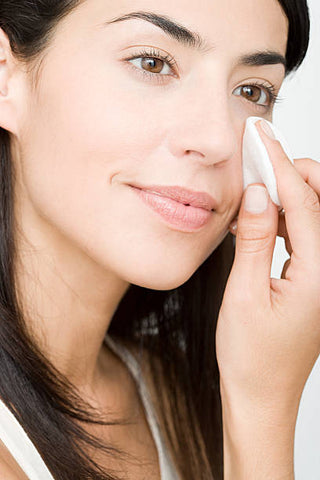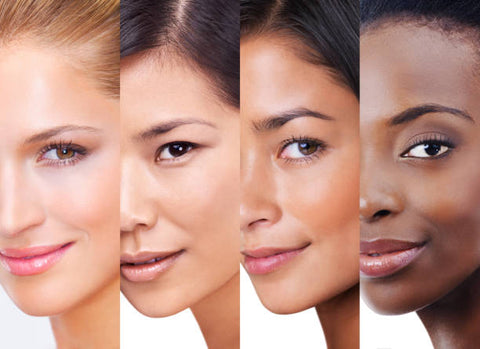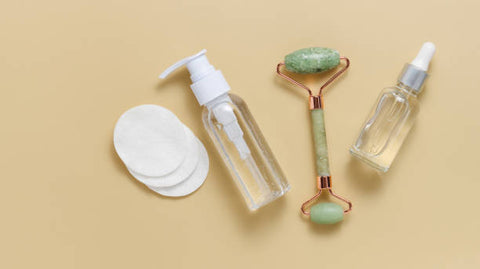Finding the best facial cleanser for your market may be a daunting task. How do you know which suits your skin type? In this article, I will share tips to help you choose the right cleanser. By 2025, experts predict that the facial cleanser industry will exceed $9.2 billion.
The best facial cleanser for your market depends on your skin type and concerns. It would help if you looked for a gentle, non-foaming, and hydrating cleanser for dry or sensitive skin. You should also consider the cleanser's ingredients, texture, and fragrance to suit your preferences.
To effectively market facial cleansers, it's crucial to understand the different skin types and concerns and choose the right product accordingly. Keep reading to learn more!
Why Choosing the Right Facial Cleanser Matters
As a skincare expert, I know how important it is to choose the right facial cleanser for your skin type and concerns. Cleansing your face washes away dirt, dead skin cells, makeup, and anything else that might clog your pores or cause a general dullness. It also prepares your skin for the next skincare routine steps, such as toning, moisturizing, and applying serums or treatments.
But not all cleansers are created equal. Some cleaners may strip your skin of natural oils, leading to dryness and irritation. Others may be too harsh for acne-prone skin, leading to further breakouts. Choosing the right facial cleanser may help to balance your skin’s natural oils, unclog pores, and prevent breakouts. It may also help to address specific skin issues, such as hyperpigmentation, rosacea, or aging. Find the different types of aging here.

So, how do you choose the right facial cleanser for your skin? Here are some tips to help you find the best product for your needs:
Know your skin type
Different skin types have different needs when it comes to cleansing. Find 5 different types of skin here. For example, if you have dry skin, use a cream or oil-based cleanser that hydrates and nourishes your skin. If you have oily skin, use a gel or foam-based cleanser that removes excess oil and impurities without over-drying your skin. If you have combination skin, you may want to use a gentle cleanser that balances your skin’s oil production. If you have sensitive skin, you may want to use a fragrance-free and hypoallergenic cleanser that soothes and calms your skin.
Know your skin concerns
Besides your skin type, you may also have specific skin concerns that you want to address with your cleanser. Find 12 summer skin problems and prevent them here. For example, if you have acne-prone skin, you may use a cleanser containing salicylic acid, benzoyl peroxide, or tea tree oil, which may help fight bacteria and inflammation. If you have dark spots or pigmentation, consider using a cleanser containing vitamin C, niacinamide, or azelaic acid, which may help brighten your skin tone. If you have aging skin, consider using a cleanser that contains glycolic acid, retinol, or collagen, which may stimulate cell renewal and smooth out fine lines and wrinkles.
Know your ingredients
When choosing a facial cleanser, it is essential to read the ingredient list and look for products free from harmful chemicals, such as parabens, sulfates, SLS, and alcohol. These ingredients may irritate your skin and cause more harm than good. Instead, look for natural and organic products, such as aloe vera, green tea, chamomile, and rose water. These ingredients may nourish, hydrate, and protect your skin from environmental damage. Find more natural ingredients here.
Know your formulation
The texture and consistency of your cleanser may also affect how well it cleanses your skin. For example, if you wear heavy makeup, use a cleansing oil or balm that may dissolve and remove makeup effectively. If you prefer a lighter and fresher feel, use cleansing or micellar water to cleanse your skin without rinsing. If you want a deeper and more thorough cleanse, use a cleansing brush or device to exfoliate and massage your skin.
Choosing the right facial cleanser may significantly affect your skin’s health and appearance. Following these tips, you may find the best product for your skin type and concerns and enjoy a clear, glowing complexion.
How to Identify Your Skin Type and Needs
As a skincare expert, I know how important it is to identify your customers' skin types and needs before recommending or selling them any product. Different skin types have other characteristics, challenges, and preferences, and using the wrong product may cause more harm than good. In this article, I will share practical methods for assessing customer needs and finding the best facial cleanser for your market. Learn how to determine your skin type here.
Use existing data
One of the easiest ways to identify customer needs is to use the data you already have, such as sales records, customer reviews, feedback forms, or surveys. You may analyze this data to find out what products are popular among your customers, what problems they are trying to solve, what features they value, and what complaints they have. This may help you understand their needs and preferences and identify any gaps or opportunities in the market.
Solicit customer feedback
Another way to identify customer needs is to ask them directly through interviews, focus groups, online forums, or social media. You may ask them open-ended questions, such as what their skin concerns are, what their goals are, what their expectations are, and what their challenges are. You may also ask them specific questions, such as what type of cleanser they use, how often they use it, how to apply it, and how satisfied they are with it. This may help you understand their behaviors, motivations, and pain points. Learn how to solicit customer feedback here.
Customer journey mapping
A third way to identify customer needs is to create a customer journey map, a visual representation of the steps your customers take, from becoming aware of your product to purchasing and using it. You may map out the different touchpoints, emotions, actions, and decisions your customers experience along the way and identify their needs, wants, and frustrations at each stage. This may help you empathize with your customers, improve their experience, and optimize your product and service.
Using these methods, you may identify your customer's skin type and needs and tailor your product accordingly. For example, if you find out that your customers have dry skin, you may offer them a cream or oil-based cleanser that hydrates and nourishes their skin. If you find out that your customers have oily skin, you may offer them a gel or foam-based cleanser that removes excess oil and impurities without over-drying their skin. If you find out that your customers have sensitive skin, you may offer them a fragrance-free and hypoallergenic cleanser that soothes and calms their skin.

What to Look for and Avoid in a Facial Cleanser
As a skincare expert, I know how crucial it is to choose the right ingredients for your facial cleanser. The ingredients in your cleanser may make a big difference in how your skin looks and feels and how well it responds to other skincare products. In this article, I will share some of the best and worst ingredients to look for and avoid in a facial cleanser based on your skin type and concerns.
Find our best collection of facial cleansers here.
Best ingredients for dry or sensitive skin:
If you have dry or sensitive skin, you need a gentle and hydrating cleanser to cleanse your skin without stripping it of its natural moisture. Ingredients to look for are lactic acid, hyaluronic acid, ceramides, and natural oils like avocado and jojoba. These ingredients may help moisturize, soothe, and repair your skin barrier, preventing dryness, irritation, and inflammation. Also, avoid ingredients that those with oily skin should be using. Cleansers with salicylic or glycolic acids work to reduce oil and will further dry out the skin, creating more irritation, cracking, and redness.
Best ingredients for oily or acne-prone skin:
If you have oily or acne-prone skin, you need a cleanser to remove excess oil, dirt, and bacteria from your pores without over-drying or irritating your skin. Ingredients to look for are retinol, salicylic acid, benzoyl peroxide, and tea tree oil. These ingredients may help to exfoliate, unclog, and disinfect your pores and reduce inflammation and sebum production. They may also help to treat and prevent acne breakouts, blackheads, and whiteheads. However, avoid too harsh or drying ingredients for your skin, such as alcohol, sulfates, and fragrances. These ingredients may strip your skin of its natural oils, which may cause your skin to produce more oil to compensate, leading to more clogged pores and breakouts. They may also cause irritation, redness, rashes, and allergic reactions. Find 11 common causes of skin rashes here.

Best ingredients for dull or aging skin:
If you have light or aging skin, you need a cleanser that may brighten and rejuvenate your skin and improve its texture and tone. Vitamin C, niacinamide, glycolic acid, and antioxidants are ingredients to look for. These ingredients may help stimulate collagen and elastin production, improving your skin's elasticity and firmness. They may also help to fade dark spots, hyperpigmentation, and sun damage, making your skin look more radiant and even. However, avoid ingredients that may cause oxidative stress or inflammation to your skin, such as parabens, phthalates, and artificial colors. These ingredients may accelerate the aging process by damaging your skin cells and DNA and causing irritation and sensitivity.
Choosing the right ingredients for your facial cleanser is essential for achieving healthy and beautiful skin. Following these tips, you may find the best facial cleanser for your skin type and concerns and enjoy a clear, glowing complexion.

How to Match the Texture and Consistency of the Cleanser to Your Market
As a skincare expert and a fan of Neutriherbs products, I know how important it is to pick the correct formulation for your facial cleanser. The texture and consistency of your cleanser may affect how well it cleanses your skin, how comfortable it feels, and how easy it is to use.
For dry or sensitive skin:
If you have dry or sensitive skin, you need a cleanser that is gentle, hydrating, and soothing. It would help if you avoided too harsh, drying, or irritating cleansers, such as those that contain alcohol, sulfates, or fragrances. Instead, it would help if you looked for cleansers that have a milky, creamy, or oil-based texture, such as the Neutriherbs Skin Balancing Milky Cleanser. These cleansers may moisturize, nourish, and protect your skin barrier and calm any redness or inflammation. They may also remove makeup and impurities effectively without stripping your skin of its natural oils.
For oily or combination skin:
If you have oily or combination skin, you need a cleanser that may remove excess oil, dirt, and bacteria from your pores without over-drying or irritating your skin. It would help if you avoided too rich, greasy, or heavy cleansers, such as those containing mineral oil, petrolatum, or lanolin. Instead, it would help if you looked for cleansers that have a gel, foam, or clay-based texture, such as the Neutriherbs Skin Balancing Gel Cleanser or the Neutriherbs Skin Balancing Clay Facial Cleanser. These cleaners may balance, purify, and mattify your skin, unclog your pores, and prevent breakouts. They may also leave your skin fresh and clean without residue or tightness.
For normal or mature skin:
If you have normal or mature skin, you need a cleanser that may brighten, rejuvenate, and smooth your skin, as well as improve its texture and tone. It would help if you avoided too dull, boring, or basic cleansers, such as those that contain only water, glycerin, or soap. Instead, it would be best if you looked for cleansers that have a powder, micellar, or enzyme-based texture, such as the Neutriherbs Vitamin C Brightening Powder Cleanser, the Neutriherbs Micellar Cleansing Water, or the Neutriherbs Papaya Enzyme Cleanser. These cleansers may exfoliate, stimulate, and nourish your skin and fade dark spots, hyperpigmentation, and sun damage. They may also make your skin look more radiant and even without any irritation or sensitivity.

How to Highlight the Benefits and Features of Your Facial Cleanser
I know how important it is to highlight the benefits and features of your facial cleanser. You want to showcase how your product may help your customers achieve healthy and glowing skin and why they should choose it.
Identify your target market and niche.
Before writing, you must know your ideal customers, their skin type and concerns, and what they want in a facial cleanser. This will help you tailor your message to their needs, wants, and pain points and make them feel understood and valued. For example, suppose you are targeting women with dry and sensitive skin. In that case, you must emphasize how your product may hydrate, nourish, and soothe their skin without causing irritation or allergic reactions. Find the ultimate guide to attracting your niche target market here.
Use the AIDA formula.
AIDA stands for Attention, Interest, Desire, and Action, a proven formula for writing compelling product descriptions. It helps you structure your content to capture your customers' attention, spark their interest, create a desire for your product, and prompt them to take action. Here is how you may apply the AIDA formula to your product description:
Attention:
Start with a catchy headline summarizing your product's main benefit or feature and grabbing your customers' attention. For example, "Neutriherbs Skin Balancing Milky Cleanser: The Gentle and Hydrating Cleanser for Dry and Sensitive Skin."
Interest:
Next, write a short introduction that explains what your product is, what it does, and why it is different from other products. For example, "Neutriherbs Skin Balancing Milky Cleanser is a creamy and luxurious cleanser that gently removes dirt, makeup, and impurities from your skin while moisturizing, nourishing, and protecting your skin barrier. Unlike other cleansers that may strip your skin of its natural oils, this cleanser is enriched with natural ingredients like aloe vera, chamomile, and rose water that soothe and calm your skin, leaving it soft, smooth, and radiant.
Desired:
Write bullet points highlighting your product's key benefits and features and how they may solve your customers' problems or fulfill their desires. For example, "With Neutriherbs Skin Balancing Milky Cleanser, you may enjoy the following benefits:
- Hydrate and nourish your skin with natural ingredients like aloe vera, chamomile, and rose water.
- Remove dirt, makeup, and impurities without drying or irritating your skin.
- Balance your skin's oil and moisture levels and prevent dryness, flakiness, and redness.
- Protect your skin barrier and maintain your skin's natural pH level.
- Enhance your skin's texture, tone, and glow.
Find our best selection of facial cleansers here.
Action:
Write a clear and compelling call to action that tells your customers what to do next and motivates them to buy your product. For example, "Don't wait any longer. Order your Neutriherbs Skin Balancing Milky Cleanser today and experience the difference! Click the button below and get yours now!"
Use clear and concise language.
When writing your product description, you want to use clear and concise language that speaks to your customers in a friendly and professional tone. You want to avoid jargon, slang, or technical terms that might confuse or alienate your customers. Instead, you want to use simple, familiar words that effectively and persuasively convey your message. For example, instead of saying, "This cleanser contains a proprietary blend of botanical extracts that synergistically work to hydrate and balance your skin," you may say, "This cleanser contains natural ingredients like aloe vera, chamomile and rose water that moisturizes and soothe your skin."
Use sensory and emotional words.
Another way to make your product description more engaging and persuasive is to use sensory and inspirational words that appeal to your customer's senses and emotions. Sensory words describe how something looks, sounds, smells, tastes, or feels, and they may help your customers imagine using your product and experiencing its benefits. Emotional words evoke positive or negative feelings in your customers, which may help them connect with your product and brand on an emotional level. For example, instead of saying, "This cleanser has a pleasant scent," you may say, "This cleanser delights your senses with a floral and fruity aroma."
Add social proof and testimonials.
One of the most potent ways to boost your product description's credibility and trustworthiness is to add social proof and testimonials from your existing customers. Social proof is evidence that others have used and liked your product, such as ratings, reviews, awards, or endorsements. Testimonials are specific customer quotes or stories that share their positive experiences and results with your product. Adding social proof and testimonials may help you overcome any doubts or objections your customers might have and persuade them to buy your product. Find 6 ways to add social proof to your website here.
Conclusion
Following these tips may increase your chances of persuading your customers to try facial cleansers. They may help your customers achieve their skincare goals and make them loyal to your brand.



